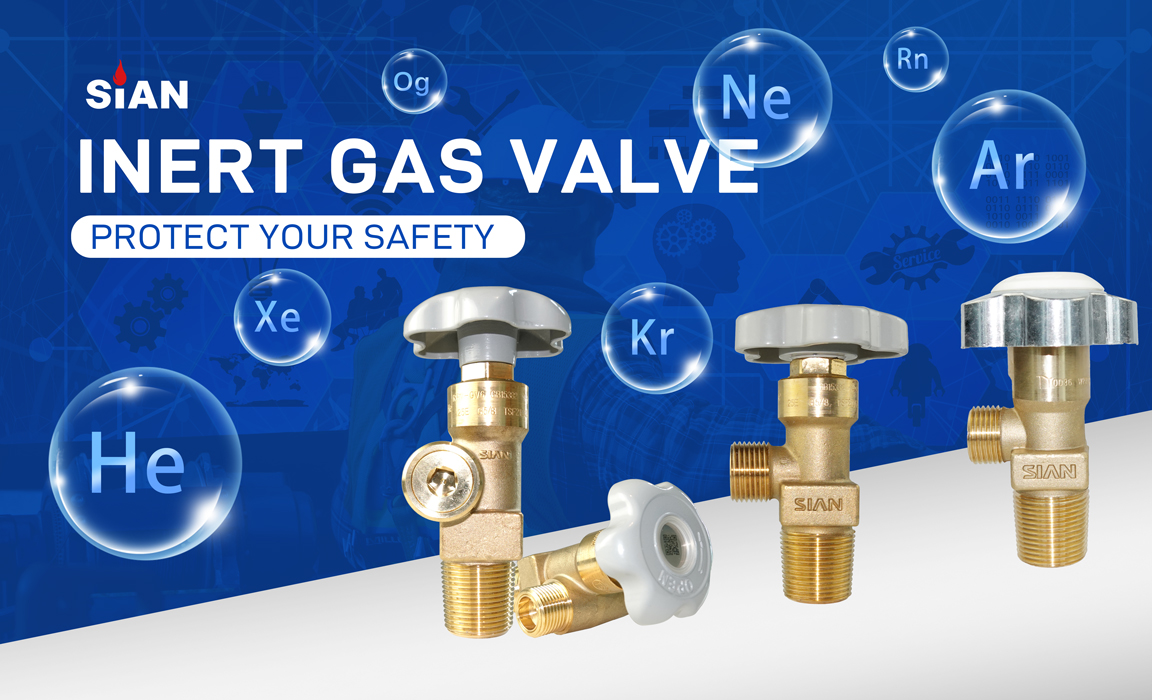Inert gases have many common characteristics. They all exist in atoms in nature. They are colorless, odorless, and odorless. They are slightly soluble in water. The melting point and boiling point are very low, and they can be liquefied at low temperatures.Except for helium, all other rare gases can solidify at a sufficiently low temperature.Helium, on the other hand, needs to be 0-1k, more than 25 times the standard pressure to solidify.

He (Helium), also known as the solar element, can be used to get close to absolute zero (minus 273.15 degrees Celsius).Among all gases, helium has the lowest boiling point and is the most difficult gas to liquefy.When the temperature after liquefaction is below minus 270.98 degrees Celsius, the viscosity of liquid nitrogen will drop sharply, showing almost no viscosity, and will show very little surface tension. At this time, the properties of liquid nitrogen mutate and become a superfluid. The heat conductivity is 800 times that of copper and it becomes a superconductor.
In nature, it is mainly found in natural gas or radioactive ores.In the atmosphere, the concentration of helium is low, only one in 52,000, but looking at the entire universe, the mass of helium accounts for 23%, only below hydrogen.
Ne (Neon), neon only exists in elemental form. So far, there is no confirmed compound, so it is generally obtained by separation from air.Neon is very rare in the atmosphere, only one in 65,000.Because neon can show a bright red-orange glow when it is discharged, it is often used to make neon light sources.
Ar (Argon), the proportion of inert gas in the air is about 0.93%, of which argon accounts for the vast majority.His density is 1.4 times that of air and 10 times that of helium.It can neither burn nor aid combustion, and is insoluble in liquid metals at high temperatures. Therefore, it is often used as a protective gas for aluminum, magnesium, copper and their alloys and stainless steel operations to prevent metal parts from being oxidized or nitrided by air.
Krypton, Kr (Krypton), Krypton has a high density and low thermal conductivity, but high transmittance, so it is usually used in the electronics industry and the electric light source industry.
Xe (Xenon), xenon is mainly present in the air and hot spring gases. It is an inert gas separated from liquid air. The gases separated from him are krypton and argon.
Xenon has an extremely high luminous intensity and is used in lighting technology to fill photocells, flashlights and xenon high-voltage lamps.In addition, xenon is also used in deep anesthetics, medical ultraviolet rays, lasers, welding, refractory metal cutting, standard gas, special mixed gas, etc.
Radon, Rn (Radon), radon is the fifth radioactive element discovered after uranium, thorium, radium and polonium. It is also one of the 19 major carcinogens announced by the World Health Organization (WHO). It is the second largest culprit of human lung cancer after cigarettes.The content of radon gas in the natural air is very small, its content is less than 0.1%. It mainly comes from building materials, such as granite, brick sand, cement, gypsum, etc., especially natural stones containing radioactive elements.
Og (Oganesson), is a synthetic inert gas element. Its atomic number and atomic weight are the highest among known elements, and it is also the heaviest element synthesized by humans.
Inert gases are widely used in many fields.The following are some of the main uses:
1. Inflation and buoyancy applications:
-Helium: Used to inflate balloons, airships, balloon drives, and balloon vests.
-Neon gas: It is used in the manufacture of neon lights and other lighting devices in gas discharge tubes.
-Argon: used to fill insulation windows, insulation materials, polystyrene, etc.
-Krypton gas: used for lighting, laser technology, high-brightness flash lights, etc.
-Xenon: used in car headlights, projectors and laser technology.
2. Welding and metalworking:
-Argon: Used for argon arc welding and inert shielded welding to prevent metal oxidation.
-Helium: Used in gas-shielded arc welding, laser welding, and electron beam welding.
3. Cooling and superconductivity:
-Helium: Used to cool superconducting magnets, nuclear magnetic resonance (NMR) equipment, and superconducting cables.
-Argon: Used to cool and protect samples in low-temperature experiments.
4. Lighting and optical applications:
-Xenon: used in lighting, car headlights, and movie projectors.
-Krypton gas: used in laser technology, high-brightness flashing lights, photographic lighting, etc.
5. Medical and Life sciences:
-Xenon gas mixed with oxygen and nitrogen: used for anesthesia and neuroprotection.
-Argon: Used for tissue cooling and protection in laser surgery.
6. Laboratory and scientific research:
-Helium and argon: used in mass spectrometer, gas chromatograph, Raman spectrometer, etc.
-Krypton and xenon: used in fluorescence spectrometer and nuclear magnetic resonance (NMR) equipment.
7. Semiconductor manufacturing:
-Nitrogen and argon: used for cleaning semiconductor wafers and maintaining an inert environment.
8. Nuclear energy industry:
-Helium: Used for cooling and regulating temperature in nuclear reactors.
These are just some of the main application areas of inert gases. With the progress of science and technology and the changes in industrial demand, the application of inert gases is also constantly expanding and improving.
 Hot Line:+86 571 8768 0216
Hot Line:+86 571 8768 0216














